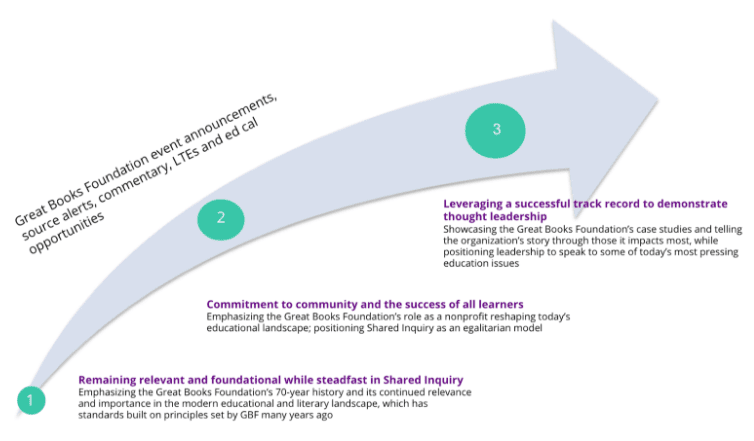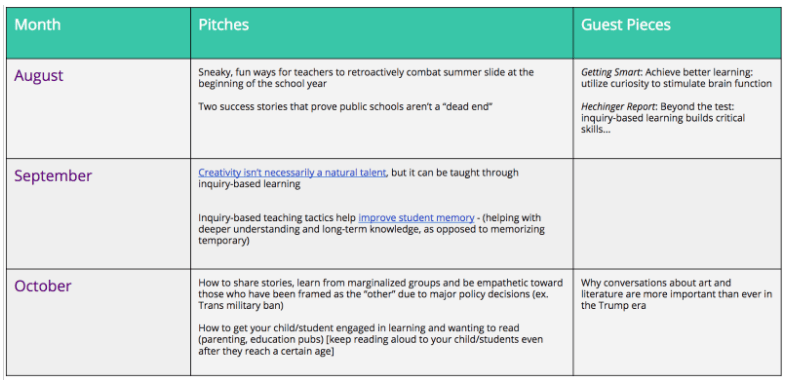Not every nonprofit can achieve long-lasting viral success like the ALS Association did with the ice bucket challenge or insert itself into the news weekly like Planned Parenthood is able to thanks to their intersection with current events. But finding a way to secure nonprofit media coverage is a worthwhile goal for organizations of any size.
Many nonprofits see a lot of success with media relations when they have something big to announce like a huge grant, an impactful new program or the appointment of a new executive. However, these breaking news announcements are fleeting. Once the news cycle has moved past the big splash, most nonprofits go silent in the media.
And that’s a shame. Media coverage can be a great low- or no-cost tactic for getting your message in front of your stakeholders and moving them to take action, but it’s only truly effective with repetition. One or two big stories a year won’t do much to move your organization’s goals forward, but dozens of smaller ones can.
So how can you keep the media coverage coming in even when you have nothing big to announce? Here are a few tips.
Think about what reporters really care about.
How will you compel a reporter to get on the phone with someone at your organization and hear what you have to say. Start by thinking about what they want (a great story that readers will engage with), not what you want (a feature that positions your organization in a positive light). Make sure you:
- Clearly communicate your mission in your outreach. When you make it clear to reporters why your mission is necessary and important, they’ll be more likely to care about what you have to say for a potential article. As an example of this, by clearly articulating what our client Challenge Detroit does and why it’s so important for the struggling city of Detroit today, we landed a story about the organization in USA Today.
- Spotlight the powerful personalities and expertise of your organization. With an articulate and knowledgeable individual to speak for your organization, reporters will be more likely to seek your nonprofit’s input on relevant stories. And if you have more than one charismatic individual who can speak on behalf of your organization, that’s great too! Just make sure you set your spokespeople to succeed by providing them with media training and even roleplaying conversations with reporters.
- Align your stories with current events in a way that’s resonant and takes risks. While you can’t always rely on a breaking news cycle or current events to join a conversation relevant to your organization’s mission, you should always be ready to jump in when the time is right.
Sometimes your organization’s relevance to a particular issue or story may not be immediately obvious and will require some creative thinking. For example, in the midst of the 2016 presidential debates, we were able to land a story on CBS online featuring our client, the Great Books Foundation, by tying the organization’s Shared Inquiry method to a story about how in-depth conversations about literature can help young students become better debaters than the presidential candidates themselves. - Regularly invite media to any and all special events your organization hosts. Some organizations think they should only invite media to their biggest and flashiest events, but that couldn’t be further from the truth. Try inviting reporters to smaller events throughout the year, like volunteer days or community meetings, as well. Many reporters, especially those at smaller local papers, are hungry for stories that showcase the good organizations like yours are doing on a day-to-day basis.
- Offer quantitative proof of your organization’s impact. Reporters love numbers. Anytime your organization hits a milestone like a certain number of people served, pounds of food distributed, or some other metric relevant to your mission, this number can support your media outreach efforts and encourage reporters to feature your nonprofit.
Build a compelling outreach strategy
To secure sustainable media coverage, you need to do more than simply think like a reporter. You also need to build a compelling outreach strategy. Before you begin reaching out to media, map out the narrative you want to build for your organization and the stories that could support that narrative. Then, put those stories on a calendar and begin to assess what you might need to gather in support of each one before you go to the media. Having media pitches planned out months in advance will ensure you always have something to take to reporters even if no breaking news or relevant current events present themselves.


If you’re having trouble thinking of unique story ideas to support your narrative, consider conducting a media audit. Assess what topics media outlets are already covering in your issue area and look at the stories other similar organizations are securing. As you analyze what’s already being covered, you may start to trends you could be part of or gaps in coverage that your organization could fill.
Foster relationships with reporters and outlets
As you reach out to reporters to pitch story ideas, work to build relationships with those who are most interested in topics that align with your organization’s mission. Send a friendly message back to every reporter who responds to your outreach, even if their response was a “no.” Let those who pass know that if they’re ever interested in writing about your organization’s topic of expertise, you’re available to serve as a source. You might be surprised to see some reporters come back to you many months after you make initial contact. And if you receive a “no” from a reporter on one story, don’t be afraid to reach out to them later on with another idea. A lot of media successes come from simply being in the right place at the right time.
Reaching out to reporters in an effort to convince them to feature your organization isn’t the only way to get media coverage or build lasting relationships with publications, either. Don’t be afraid to write and pitch contributed content like opinion pieces or guest blogs. Many media outlets are hungry for well-written content and will be happy to publish something you contribute. Just be sure to put your reporter’s hat on when you write and to present your topic in a non-promotional, journalistic style.
Be open to providing additional commentary
If you see an article that ignites a feeling in you––positive or negative––draft a brief letter to the editor in response. Remember: the key to publishing letters to the editor is timeliness, so draft and submit your letter as soon as possible after the initial article is published.
Another way to land media coverage is simply by subscribing to HARO (Help a Reporter Out) emails and responding to any inquiries relevant to your organization. The range of media outlets using HARO is huge: some of the reporters sending inquiries are with small independent blogs, and others are with major, national publications like The New York Times and USA Today.
By simply responding to a HARO query, we were able to send a quote from our client, Chicago Methodist Senior Services (CMSS), to a reporter who was working on an article for the Associated Press relevant to CMSS’ field: senior care. This article was placed in more than 40 major publications.
Learn more about how we generate sustainable nonprofit media coverage.
Access our Great Books Foundation case study to read more about how we used the tactics above to secure high-quality media coverage for our client, a 70-year-old educational nonprofit organization.